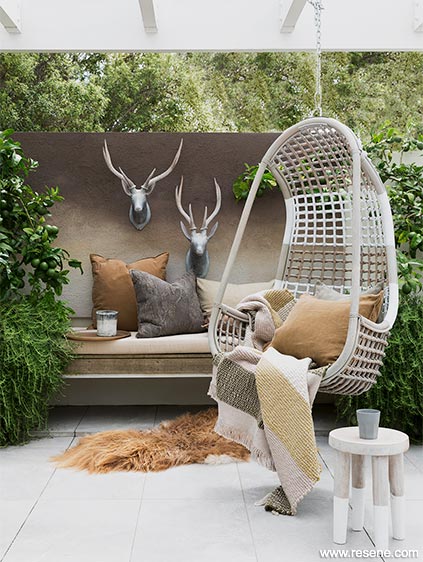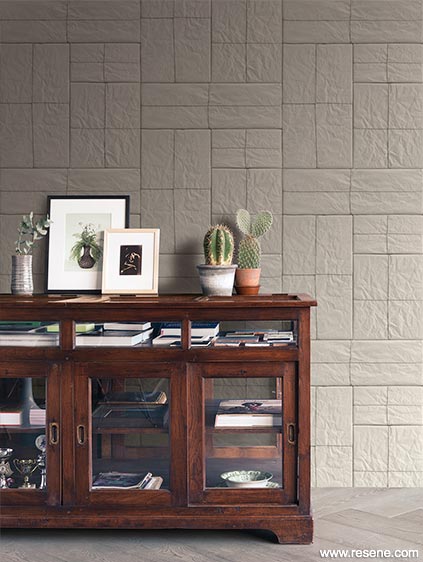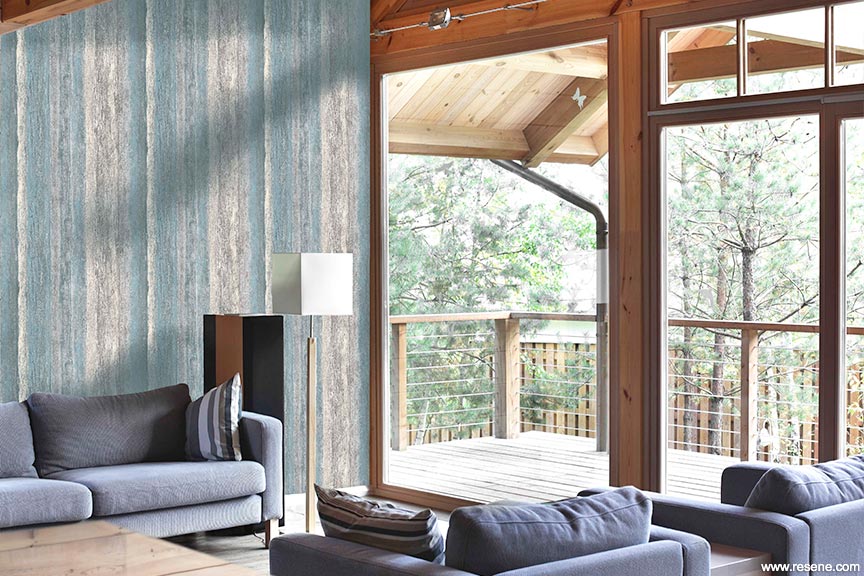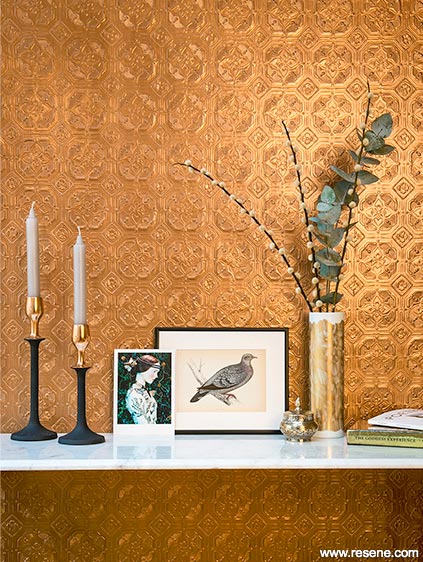From Habitat magazine - issue 25
Adding texture to a space literally adds a feel-good factor.
It's long been a technique for stylists – layering up the shelves, placing a knobbly rug on the floor, introducing fringed cushions to the furniture, and using texture in general to create an interesting scheme.


"Textures help create the mood and ambiance in a space, and invites you to touch and feel," says Resene colour expert Nikki Morris. "Texture lifts a room from drab to fab when done the right way and in the right places."
Take a look at your favourite magazines and websites, and you'll notice even the most pared back homes have a certain something that makes them stand out. It could be anything from a striped wall to a Bohemian assortment of cushions on the sofa, but it's these textured details that add up to a magazine worthy space. And it's incredibly easy for homeowners to replicate.
Texture in the home is commonly approached in two ways: tactile and visual.

Touchable textures aren't a new interior trend, but it's oh-so-fashionable in home stores right now. Textured wallpaper is especially huge at the moment, says Nikki. "We're seeing a lot of the anaglypta wallpapers from the Resene wallpaper collection returning to the mix," she says. "Homeowners are painting them in metallic paint or semi-gloss finishes for something a little luxurious, but still textural."
Wallpaper can also be used on a smaller scale. How about using it on a bedhead board or behind glass for a kitchen splashback?
The reason we're drawn to texture is that it's so prevalent in nature, and we feel an organic connection to it – it feels natural to extend that to our homes. Keep this in mind when shopping for home accessories. Look out for bamboo light shades, woven baskets, tassels and fringe trims, interesting fabrics and a plush rug that looks as good as it feels underfoot.
In the Resene range, there are products dedicated to giving added texture to homes.
Resene Sandtex is a gritty coating that leaves a fine, sandstone look (instead of using plaster). It's commonly used on masonry exteriors but paint effects specialist and artist Greer Clayton has unlocked another purpose for the product, using it to age terracotta pots, to paint over brickwork on a fireplace and to 'grit up' old tiles. Resene Non-Skid Deck & Path paint is also an option, with its gritty finish. "With Resene Sandtex, it's all about layering," says Greer. "I also use it with plaster to create some amazing stone-like effects."
Another Resene product that Greer can't get enough of is Resene Resitex, which has a coarser effect than Resene Sandtex. "It gives instant 'guts' to a surface, followed by additional layers of Resene Sandtex to plump up the thickness," she says.


There are many elements you can use to add 'visual' texture:
Top tip... Revive concrete pavers with Resene Paint Prep and Housewash then seal with Resene Concrete Conserver to keep the pavers looking good.
picture: Larnie Nicolson
words: Leigh Stockton
Search habitat magazine stories
Printed copies of habitat highlights are available from late March 2024 at Resene ColorShops and resellers, while stocks last. You can view back issues of habitat magazine online.
Specifiers:
If you have an idea, project or story that you think would suit habitat, we’d love to hear from you. Please drop us an email with your details and include photos if submitting a project.
Sign up for a DIY card and Save! Australia | New Zealand